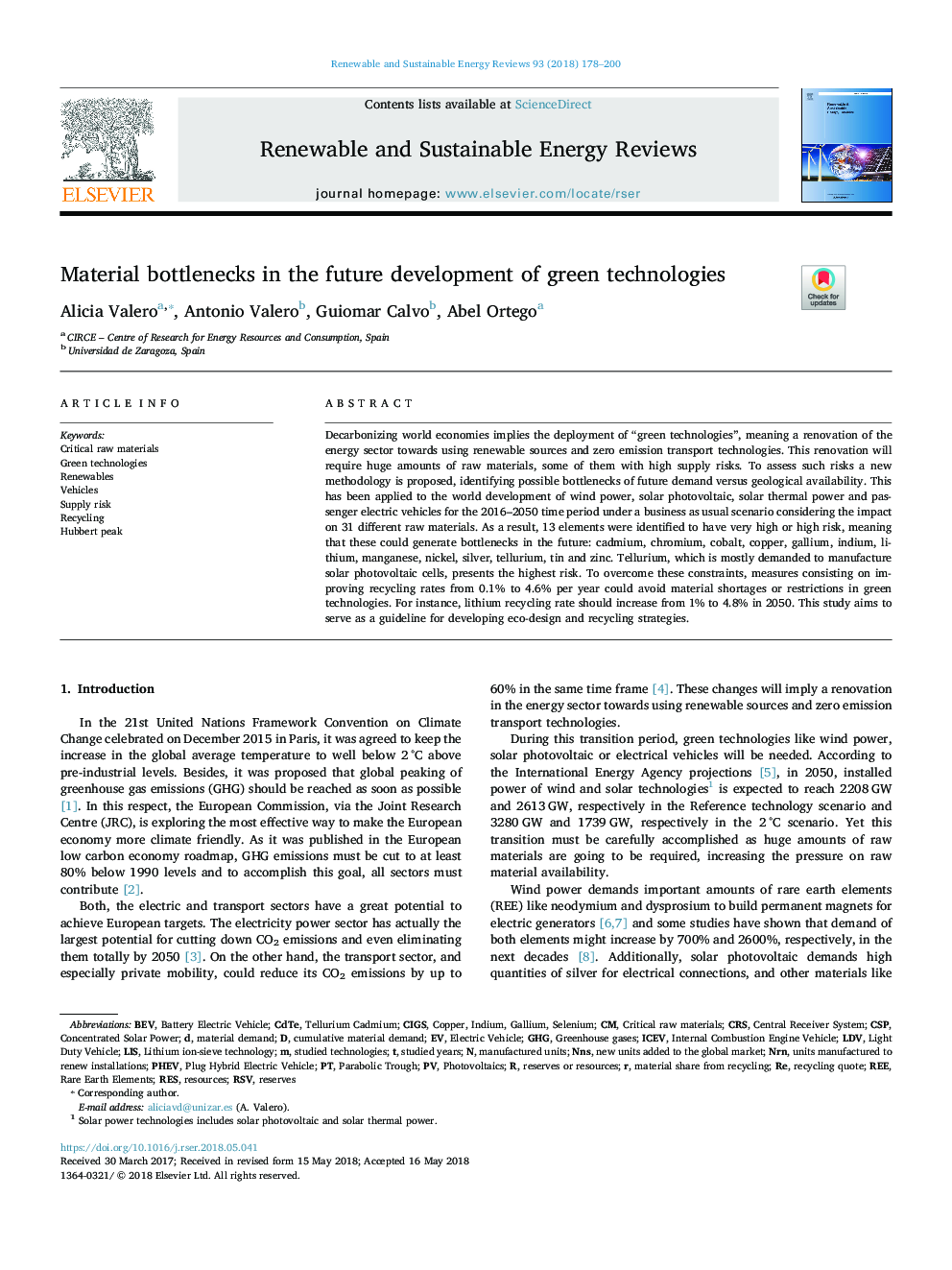| Article ID | Journal | Published Year | Pages | File Type |
|---|---|---|---|---|
| 8110675 | Renewable and Sustainable Energy Reviews | 2018 | 23 Pages |
Abstract
Decarbonizing world economies implies the deployment of “green technologies”, meaning a renovation of the energy sector towards using renewable sources and zero emission transport technologies. This renovation will require huge amounts of raw materials, some of them with high supply risks. To assess such risks a new methodology is proposed, identifying possible bottlenecks of future demand versus geological availability. This has been applied to the world development of wind power, solar photovoltaic, solar thermal power and passenger electric vehicles for the 2016-2050 time period under a business as usual scenario considering the impact on 31 different raw materials. As a result, 13 elements were identified to have very high or high risk, meaning that these could generate bottlenecks in the future: cadmium, chromium, cobalt, copper, gallium, indium, lithium, manganese, nickel, silver, tellurium, tin and zinc. Tellurium, which is mostly demanded to manufacture solar photovoltaic cells, presents the highest risk. To overcome these constraints, measures consisting on improving recycling rates from 0.1% to 4.6% per year could avoid material shortages or restrictions in green technologies. For instance, lithium recycling rate should increase from 1% to 4.8% in 2050. This study aims to serve as a guideline for developing eco-design and recycling strategies.
Keywords
CIGSICEVHubbert peakPHEVLDVBEVRSVNRNNNSRESLISCRSREECdTeCSPGHGRecyclingRenewablesInternal Combustion Engine VehicleElectric VehicleReservesSupply riskCentral receiver systemParabolic troughRare earth elementsPhotovoltaicsGreen technologiesConcentrated solar powerResourcesCritical raw materialsVehiclesBattery electric vehicleLight duty vehicleGreenhouse gases
Related Topics
Physical Sciences and Engineering
Energy
Renewable Energy, Sustainability and the Environment
Authors
Alicia Valero, Antonio Valero, Guiomar Calvo, Abel Ortego,
